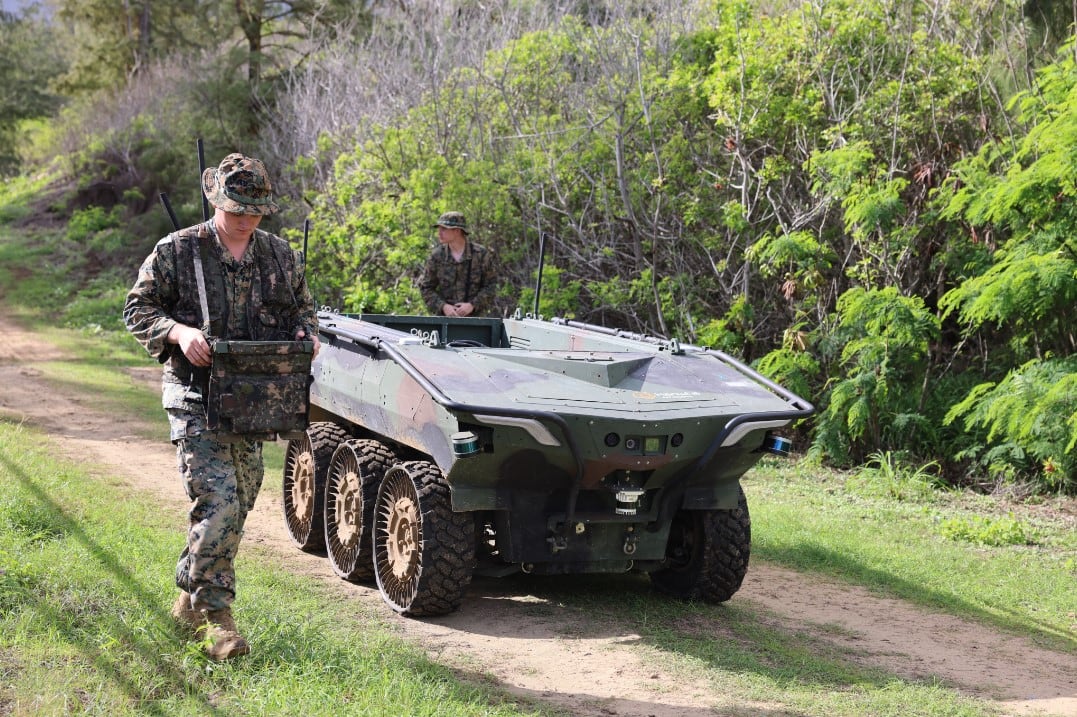It’s official: After several years of testing and experiments, the Marine Corps is sure it wants an unmanned ground vehicle.
Speaking at the Modern Day Marine conference in Washington on Wednesday, Lt. Col. Scott Humr, the deputy for the Marines’ Intelligent Robotics and Autonomous Systems program, said the Corps was now developing a requirements document for its multi-purpose UGV, though the timing of its publication was still to be determined.
“We see this as an important piece of how we envision robots working with robots,” Humr said.
RELATED

In 2023, Marines from the 3rd Littoral Logistics Battalion in Hawaii teamed up with the Army and the South Korean government to try out a Korean UGV prototype, the Hanwha Arion-SMET, in a two-week foreign comparative test, an event officials said at the time marked “a critical juncture in the Corps’ exploration of advances unmanned technologies.”
The test, which emphasized the UGV’s artificial intelligence and machine learning capacity, also underscored the vehicle’s value in contested environments, where rugged unmanned logistics platforms can decrease risk to warfighters and better ensure sustainment of combat operations.
Separately, manufacturer Rheinmetall has provided the Marine Corps with autonomous UGVs equipped with remotely controlled weapons station turrets for testing purposes since 2023.
The Marine Corps has shown interest in a robotic mule for transporting gear and weapons for over a decade, with early prototypes from the Marine Corps Warfighting Lab resembling an actual four-legged animal. But Humr said the solution the Corps was now falling in on would be close to the one already defined by the Army. The Army last year awarded contracts for Small Multipurpose Equipment Transports to American Rheinmetall Vehicles and HDT Expeditionary Systems, with officials saying they planned to award a production contract for more than 2,000 of the vehicles to one of the companies in fiscal 2027.
“A lot of the work they’ve done is like 90% of what we need. And so we’re not going to reinvent the wheel, as it were,” Humr told Marine Corps Times. “Now we just need to move out on developing the annexes, do the materiel change requests, and just start getting things out there.”
Humr emphasized the family-of-systems approach the Marine Corps is now using to shape its unmanned platform acquisition strategy.
“We love to see [unmanned aerial vehicles interfacing with ground platforms and taking loads … containers, whatever, and leaving the Marine out of the loop, as it were, and delivering those systems autonomously,” he said.
With counter-unmanned aerial systems protections bolted on and perimeter protection, he said, the vehicles should be able to operate independently near a combat operations center or further afield.
“I think those are going to be very critical for logistics, for sensing, for communications, [intelligence, surveillance and reconnaissance] etc., logistics,” Humr said. “We need to develop the requirement a little bit more and ensure that we get it out there quickly, and make sure we have the funding to support that as well. I think we’ll get that.”





